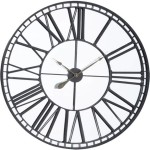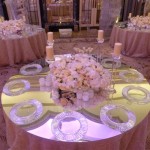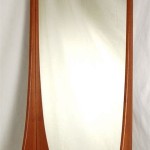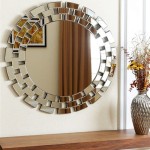Removing Bathroom Mirror Brackets
Removing bathroom mirror brackets can seem like a daunting task, but with the right tools and techniques, it can be accomplished efficiently and safely. This article outlines the process, highlighting potential challenges and offering solutions for a smooth removal.
Assessing the Bracket Type
Before beginning the removal process, identifying the type of bracket is crucial. This determines the necessary tools and approach. Common types include:
- J-Clips: These brackets grip the mirror from the sides and are typically secured with screws.
- L-Brackets: Similar to J-clips, but provide more support from beneath the mirror.
- Clips with Adhesive: Some clips utilize adhesive in addition to screws, requiring additional steps for removal.
- Z-Clips: These interlocking brackets require a specific method for detachment.
Gathering the Necessary Tools
Having the correct tools on hand simplifies the process and minimizes the risk of damage to the mirror or surrounding wall. The basic tools often required include:
- Screwdriver: Choose the correct type and size to match the screws on the brackets.
- Putty Knife: Useful for gently prying brackets away from the wall.
- Safety Glasses: Essential for protecting eyes from debris.
- Gloves: Protect hands from sharp edges and adhesives.
- Utility Knife: May be needed to cut through adhesive.
- Hammer: Occasionally useful for tapping a putty knife or other tools.
- Suction Cups: Provide extra support for larger mirrors during removal.
Preparing the Work Area
Proper preparation prevents accidents and simplifies cleaning afterward. Consider these steps:
- Cover the Sink and Countertop: Use a drop cloth or old towels to protect the surfaces from scratches and falling debris.
- Clear the Area: Remove any items that may obstruct access to the mirror or create tripping hazards.
- Enlist a Helper: For larger or heavier mirrors, an extra set of hands is invaluable for safe handling.
Removing Brackets Secured with Screws
For brackets held in place by screws, the removal process typically involves the following:
- Locate all Screws: Carefully examine the brackets to identify all securing screws. Some may be hidden by decorative caps.
- Remove the Screws: Using the appropriate screwdriver, carefully remove each screw. Keep the screws organized for potential reuse or future repairs.
- Gently Detach the Brackets: Once the screws are removed, use a putty knife to gently pry the brackets away from the wall. Avoid excessive force, which can damage the wall or the mirror.
Dealing with Adhesive-Backed Clips
Adhesive adds an extra layer of complexity to the removal process. The following steps can assist in detaching these clips:
- Apply Heat: A hairdryer or heat gun can soften the adhesive, making it easier to separate the clips. Avoid overheating the mirror, which can cause cracking.
- Use a Utility Knife or Dental Floss: Carefully slide a utility knife or dental floss behind the clip to cut through the adhesive. Work slowly and patiently to avoid damaging the wall.
- Apply Adhesive Remover: If adhesive residue remains on the wall, use a commercial adhesive remover according to the manufacturer's instructions.
Handling Z-Clips
Z-clips require a specific technique for removal:
- Identify the Interlocking Mechanism: Understand how the two parts of the Z-clip interlock. One part is typically fixed to the wall, while the other is attached to the back of the mirror.
- Slide or Lift the Mirror: Depending on the specific design, the mirror may need to be slid upwards or lifted slightly to disengage the clips.
- Consult Manufacturer's Instructions If Necessary: For complex Z-clip designs, it is advisable to consult the manufacturer's instructions for specific removal procedures.
Repairing Wall Damage
After removing the brackets, minor wall damage is common. Small holes left by screws can be easily repaired:
- Apply Spackling Compound: Use a putty knife to fill the holes with spackling compound, smoothing the surface even with the surrounding wall.
- Sand the Area: Once the spackling compound is dry, sand the area smooth to prepare it for painting or wallpapering.
- Touch Up the Paint or Wallpaper: Apply matching paint or wallpaper to restore the wall's original appearance.
Safety Precautions
Throughout the entire process, prioritizing safety is paramount. Observe these important safety precautions:
- Wear Safety Glasses: Always wear safety glasses to protect eyes from debris, especially when working with adhesive or using tools.
- Handle the Mirror with Care: Mirrors are fragile and can easily break. Handle with care and avoid applying excessive pressure.
- Use Appropriate Tools: Using the correct tools prevents damage and ensures a smooth removal process.
- Seek Professional Assistance if Necessary: If unsure about any step, or if dealing with a particularly large or heavy mirror, seeking professional assistance is recommended.

2 Step Guide How To Remove A Bathroom Mirror With Clips

Removing A Bathroom Mirror Mounting Clips Or Brackets

How To Remove A Bathroom Mirror Lowe S

How To Remove A Bathroom Mirror 9 Steps With Pictures Wikihow

How To Remove A Frameless Mirror Like Nervous Grandma

Mirror Clips Hometalk

Removing A Bathroom Mirror Mounting Clips Or Brackets

Taking Down A Bathroom Mirror

How To Safely And Easily Remove A Large Bathroom Builder Mirror From The Wall Site Title

How To Safely And Easily Remove A Large Bathroom Builder Mirror From The Wall Site Title








